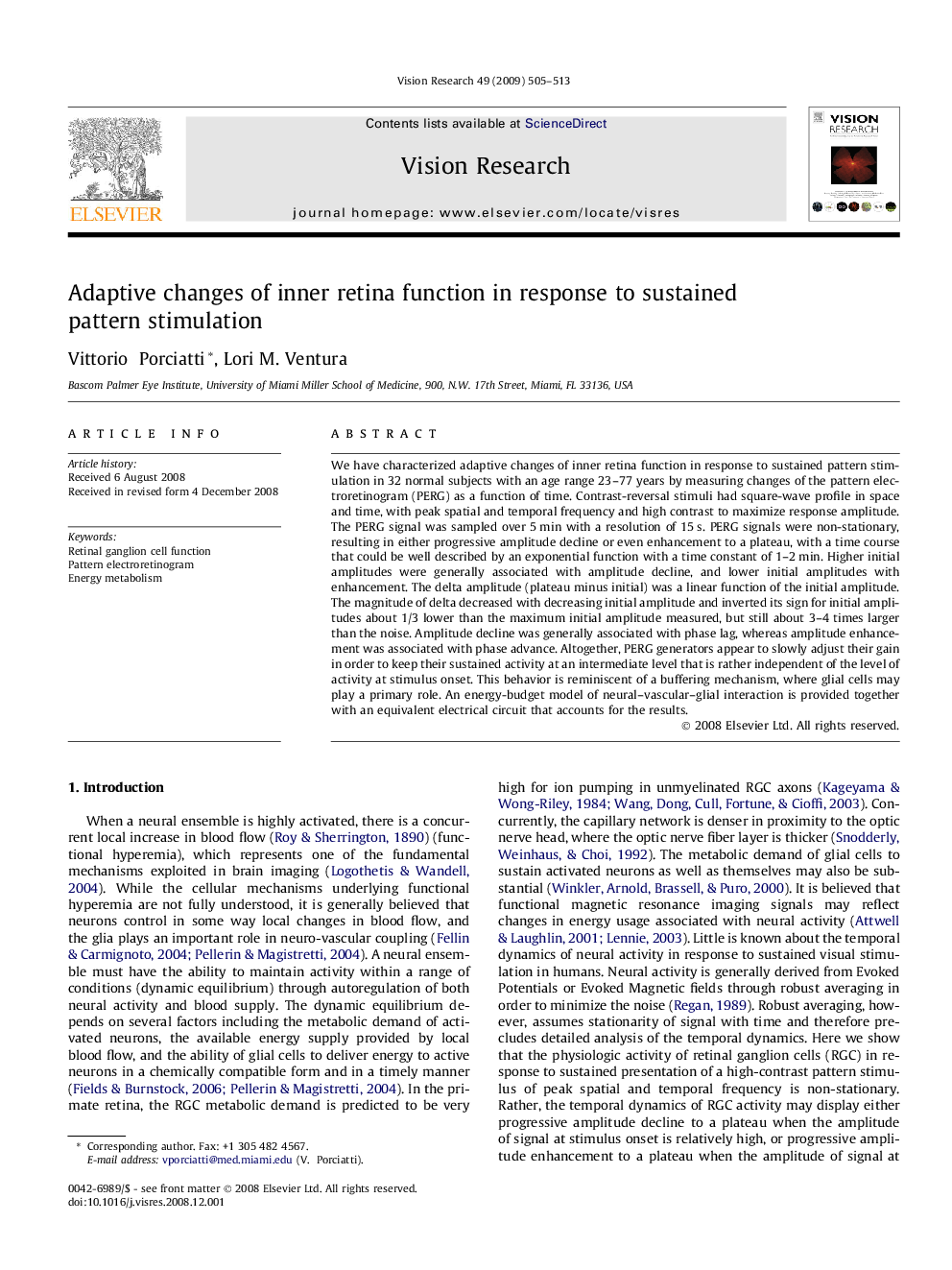| Article ID | Journal | Published Year | Pages | File Type |
|---|---|---|---|---|
| 6203923 | Vision Research | 2009 | 9 Pages |
We have characterized adaptive changes of inner retina function in response to sustained pattern stimulation in 32 normal subjects with an age range 23-77 years by measuring changes of the pattern electroretinogram (PERG) as a function of time. Contrast-reversal stimuli had square-wave profile in space and time, with peak spatial and temporal frequency and high contrast to maximize response amplitude. The PERG signal was sampled over 5Â min with a resolution of 15Â s. PERG signals were non-stationary, resulting in either progressive amplitude decline or even enhancement to a plateau, with a time course that could be well described by an exponential function with a time constant of 1-2Â min. Higher initial amplitudes were generally associated with amplitude decline, and lower initial amplitudes with enhancement. The delta amplitude (plateau minus initial) was a linear function of the initial amplitude. The magnitude of delta decreased with decreasing initial amplitude and inverted its sign for initial amplitudes about 1/3 lower than the maximum initial amplitude measured, but still about 3-4 times larger than the noise. Amplitude decline was generally associated with phase lag, whereas amplitude enhancement was associated with phase advance. Altogether, PERG generators appear to slowly adjust their gain in order to keep their sustained activity at an intermediate level that is rather independent of the level of activity at stimulus onset. This behavior is reminiscent of a buffering mechanism, where glial cells may play a primary role. An energy-budget model of neural-vascular-glial interaction is provided together with an equivalent electrical circuit that accounts for the results.
